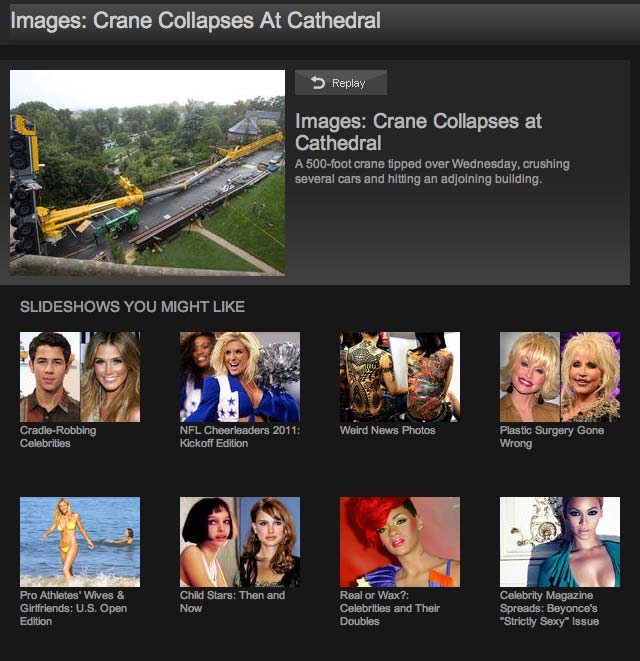The New York Times today talks about the sound component of digital television (although they call it HDTV, a subset of DTV).
HDTV doesn’t just make television look as it never has before; it makes it sound different, too. Or it does if you have a surround-sound system hooked up to a high-definition set (as Sean Wargo, director of industry analysis at the Consumer Electronics Association, estimates about 8 percent of American TV households do), and you’re watching a show broadcast in Dolby Digital 5.1 audio.
Sound effects have always been an important part of television shows, of course, but in one- or two-speaker systems, the car crashes and gunshots had to be toned down lest they drown out dialogue and music. HDTV can send six discrete audio channels to as many speakers: three in the front (left, center, and right); two on the side or rear (known as the surrounds); and a subwoofer (the .1 in a 5.1 system, it handles only low-frequency effects and Barry White).
With the addition last month of CBS, all four major broadcast networks beam their HDTV series in digital surround sound. Here’s a guide to some of the sounds, on some of the 40 or so network high-definition programs, that can be heard in a new way.
The author, who is obviously thrilled with the sound, doesn’t mention one major problem: the weak link of the local stations. Here in Washington, only one station passes through Dolby Digital 5.1 sound: WJLA, our ABC affiliate. Unfortunately, almost none of ABC’s programs actually feature true 5.1 sound. As for the other stations in our market… well, the sound is universally pretty crappy, with levels too low or too high. And out NBC affiliate often doesn’t even pass through the HD feed, much less the 5.1 audio.
It’s also worth noting that another technology built into DTV is not being used at all here in DC: program guides. As a digital medium, the DTV signal contains information about the programs being broadcast. At the inception of this technology, our PBS station — WETA — tried to include program information. Now, it seems to have disappeared. Other stations in DC never bothered to include it. It renders the program guide capabilities of tuners moot.
Digital television could really be amazing, if the local broadcasters would figure out what the hell they’re doing.
